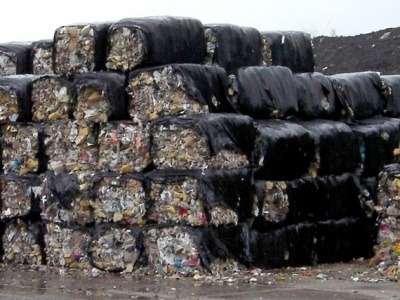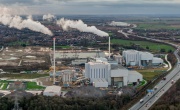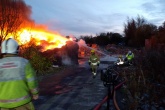Fire prevention plan guidance published for residual waste sites
New fire prevention plan (FPP) guidance has been launched by the trade body for the refuse-derived fuel (RDF) industry. The guidance, launched at the members’ meeting of the RDF Industry Group on 6 June, is the only sector-specific advice available on FPPs for the RDF and residual waste industry.
The RDF Industry Group has 33 members from across the European RDF supply chain, representing around 64 per cent of the RDF exported from the UK. The group supports members to explore opportunities in the export of waste for treatment (i.e. to be burned for energy), with approximately 14 per cent of all the UK’s residual waste sent abroad for treatment.
The guidance, developed in consultation with the Environment Agency (EA), offers advice on how to develop a FPP for operators in the RDF and residual waste sector, along with examples of best practice based on the experience of members that operate permitted residual waste sites. The EA states that FPPs should set out measures the company will take to achieve three core objectives: to minimise the likelihood of a fire, to prevent the spread of a fire if it does break out and to aim for a fire to be extinguished within four hours.

The RDF Industry Group’s 19-page guidance document provides in-depth information about managing the common causes of fire on waste sites, recommending that operators are always aware of exactly how old the waste on their site is – the longer baled waste is stored the more likely the bales are to become compromised, for instance through oxygen reaching the waste inside.
And aside from the obvious danger to life, smoke from burning waste can release pollutants into the environment, proving major risks to air quality and nearby water sources, while the economic cost for companies and the emergency services is high.
EA data reveals that there were on average 300 waste fires a year in the UK between 2001 and 2013. From 2013 to 2016, the number of incidents at non-hazardous waste sites reduced, but the figure doubled from 2016 to 2017, showing that there is still a serious problem for operators. 2017 saw 14 waste fires at permitted sites that caused ‘serious pollution incidents’.
Developing an FPP is a requirement in England for all operators wishing to obtain a new or updated waste permit to store combustible waste, as well as for all existing sites that have experienced a fire.
Peter Buckley, Senior Fire Advisor with the EA, commented: “Following on from specific guidance produced for other parts of the waste sector, we are pleased that the RDF Industry Group has produced guidance specific to residual waste and made this available to the wider industry. We hope this guidance will enable residual waste operators to produce high quality FPPs and ensure that any alternative measures proposed meet the three core objectives set out in the EA’s guidance.”
The FPP guidance for the residual waste industry can be downloaded from the RDF Industry Group website.







